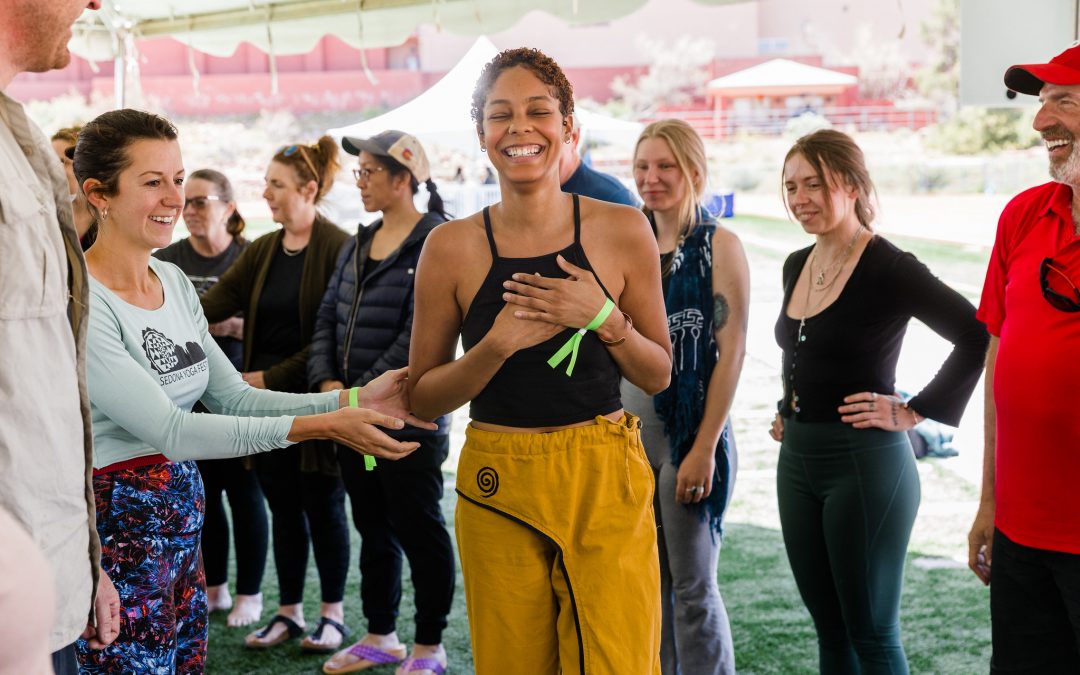Community as a Practice
by Jivana Heyman
The below is an excerpt from Jivana Heyman’s newest book, coming out January 11. Order your copy today!
Often when I teach about how collaboration supports accessibility, I’m usually referring to a collaboration between teacher and student, which can be incredibly powerful. But there is also the collaboration that happens within a group of students. They can support and encourage each other in essential ways. So it’s important to reflect on how you can help to build a positive yoga community that is supportive, welcoming, and safe for all your students.
When I spoke to Michelle Cassandra Johnson, she explained how community building is an outcome of humility because it shifts power from the individual teacher to the group. It’s an acknowledgment of the healing power of the community. I love the idea that a yoga community is more than its lead teacher or teachers. It is the community itself that is key. It reminds me of Thich Nhat Hanh’s famous saying, “The next Buddha will be a sangha.”
Personally, I find group classes to be a very different experience from my home practice. The group offers support and encouragement and a sense of camaraderie that inspires and motivates me. Cultivating a healthy community is one of the truly special opportunities of teaching yoga.
The stereotype of a lone yogi sitting in meditation in a cave is more mythology than reality. Community is itself a yoga practice because it’s about learning to see yourself in others—which can be hard to do. This idea of transcending our individualism is a thread woven throughout the history of yoga. You can even see it in the wisdom of the Bhagavad Gita:
As your mind becomes harmonized through yoga practices, you begin to see the Atman in all beings and all beings in your Self; you see the same Self everywhere and in everything.
Ironically, to facilitate the inward journey of the yoga path, we need outer support. Support in the form of a loving community. Sangha, spiritual community, is helpful in inspiring practice as well as keeping us on the path when we’re struggling. This can be a lot simpler than it sounds. It can simply be a group of students who become yoga friends, bound together by a welcoming teacher.
While we all benefit from community, Accessible Yoga classes may include students who are particularly isolated. Isolation can be unhealthy mentally and physically, so creating opportunities for community-building is not only a nice idea, but a very effective technique for supporting students in general. As a teacher, consider ways to support connection and community. This could include:
- Having students introduce themselves at the beginning of class or doing a quick icebreaker.
- Learning your regular students’ names.
- Creating space before or after class for conversation.
- Encouraging students to support each other. They can connect and form friendships outside of class in a way that may not be appropriate for you as the teacher.
- Thinking of activities for the students to do together, such as form a book group, or create a fundraiser for a cause they are interested in supporting.
Learn more on Jivana’s website, and then practice with him in-person at the Sedona Yoga Festival in March! Tickets on sale now.
Lead image by Danielle Holman.


